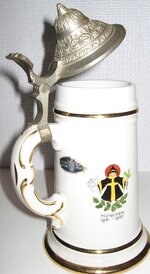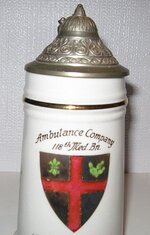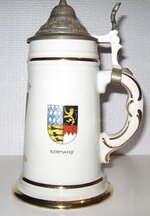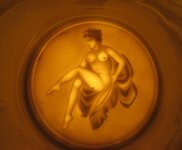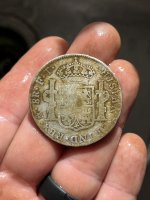Copperhead
Bronze Member
This beer stein sat on the fireplace mantel of our home since I was a kid. It was given to my father when he was in the service and is inscribed with his name. There is a label on it saying Zinn giesser. I showed it to my older brother today, who is visting from California, figuring he would like it, to keep in the family. Well needless to say, I was quite surprised when he replied, "I remember this", took it over to a light and said "look here"....the last picture taken is of the inside of the stein being held up to the light. After enjoying the stein for 40+ years, today was my first view of the secret it held in it's bottom. My google search of the name resulted in numerous sites in German. Is anyone here familiar with this type of stein and the process used to create it? ...thanks


